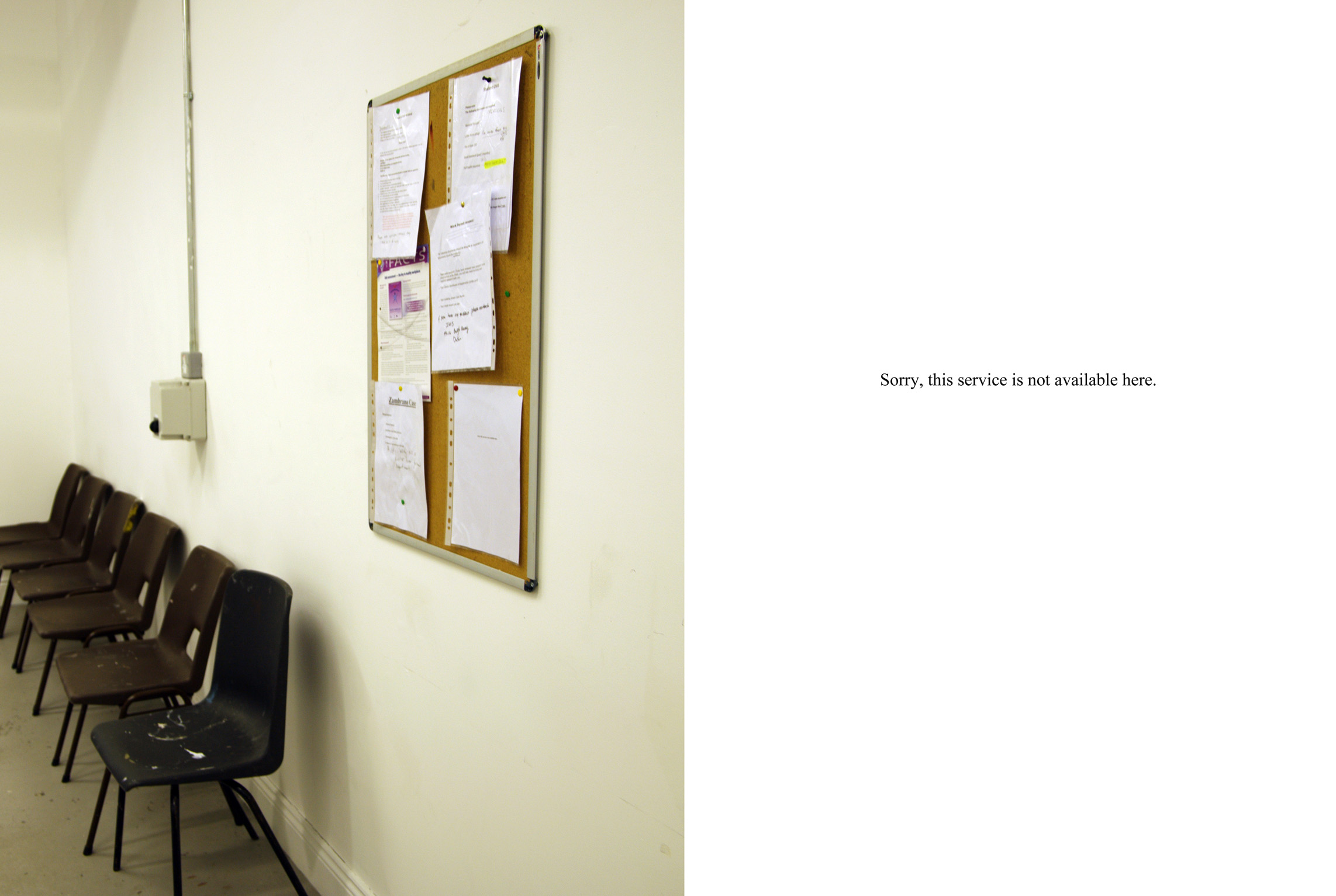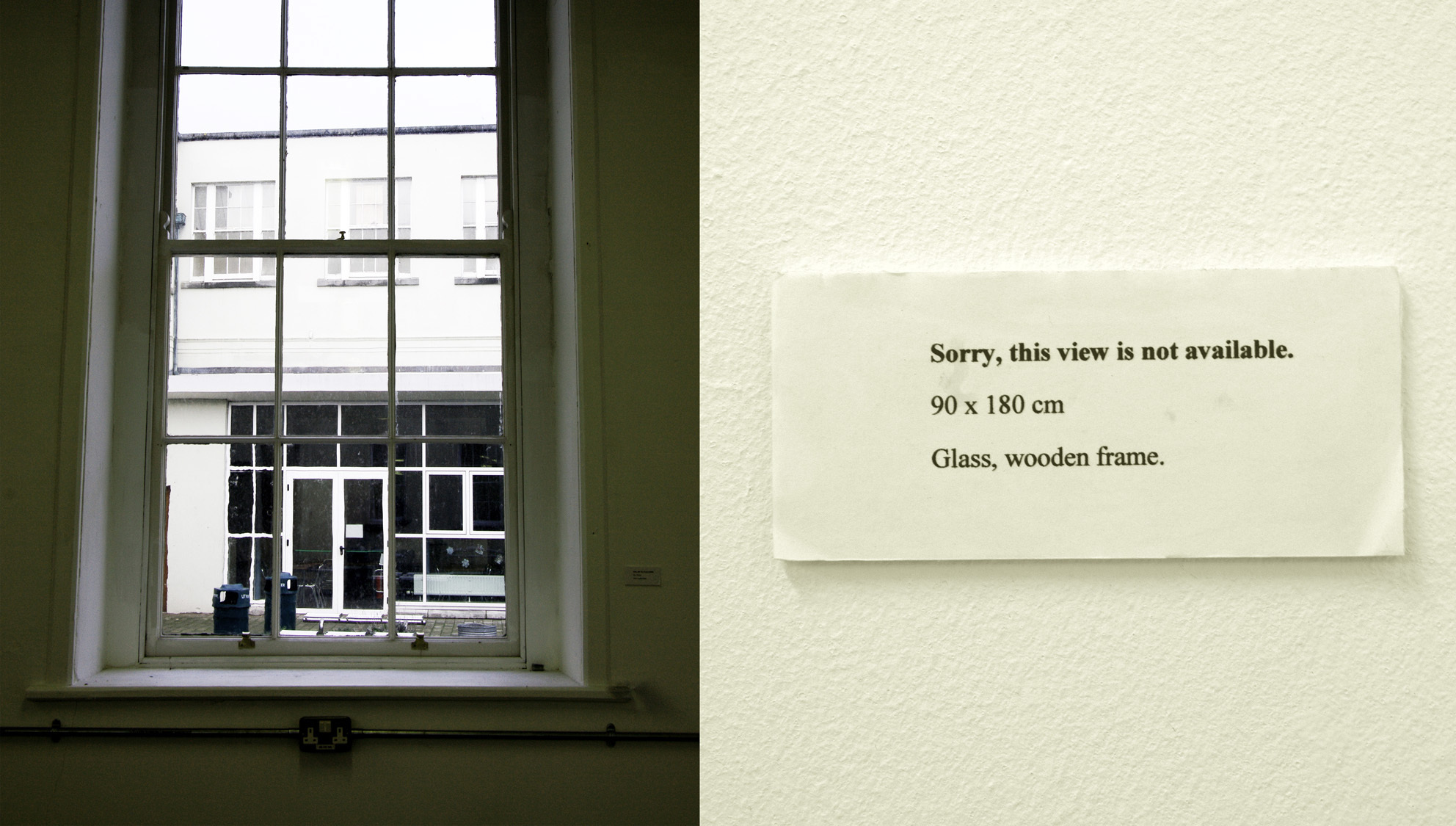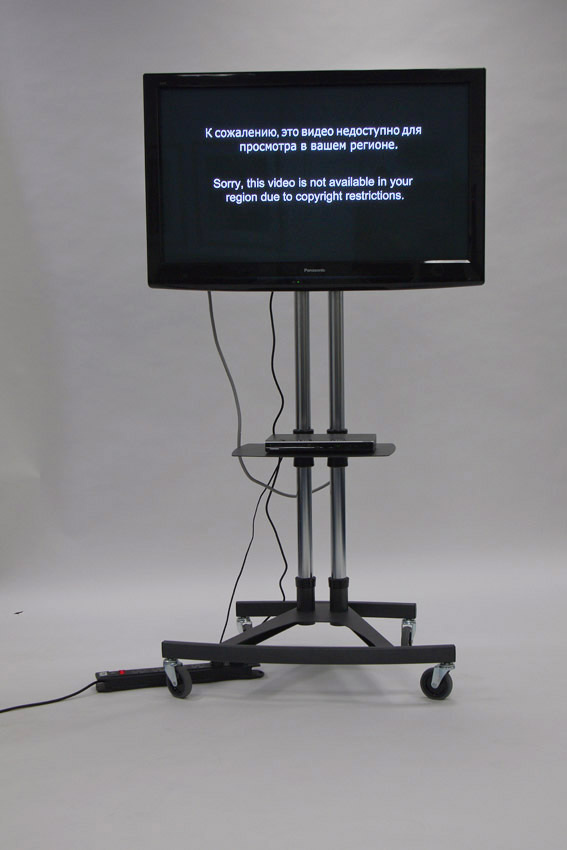Poikkeustila, Martial Law
2017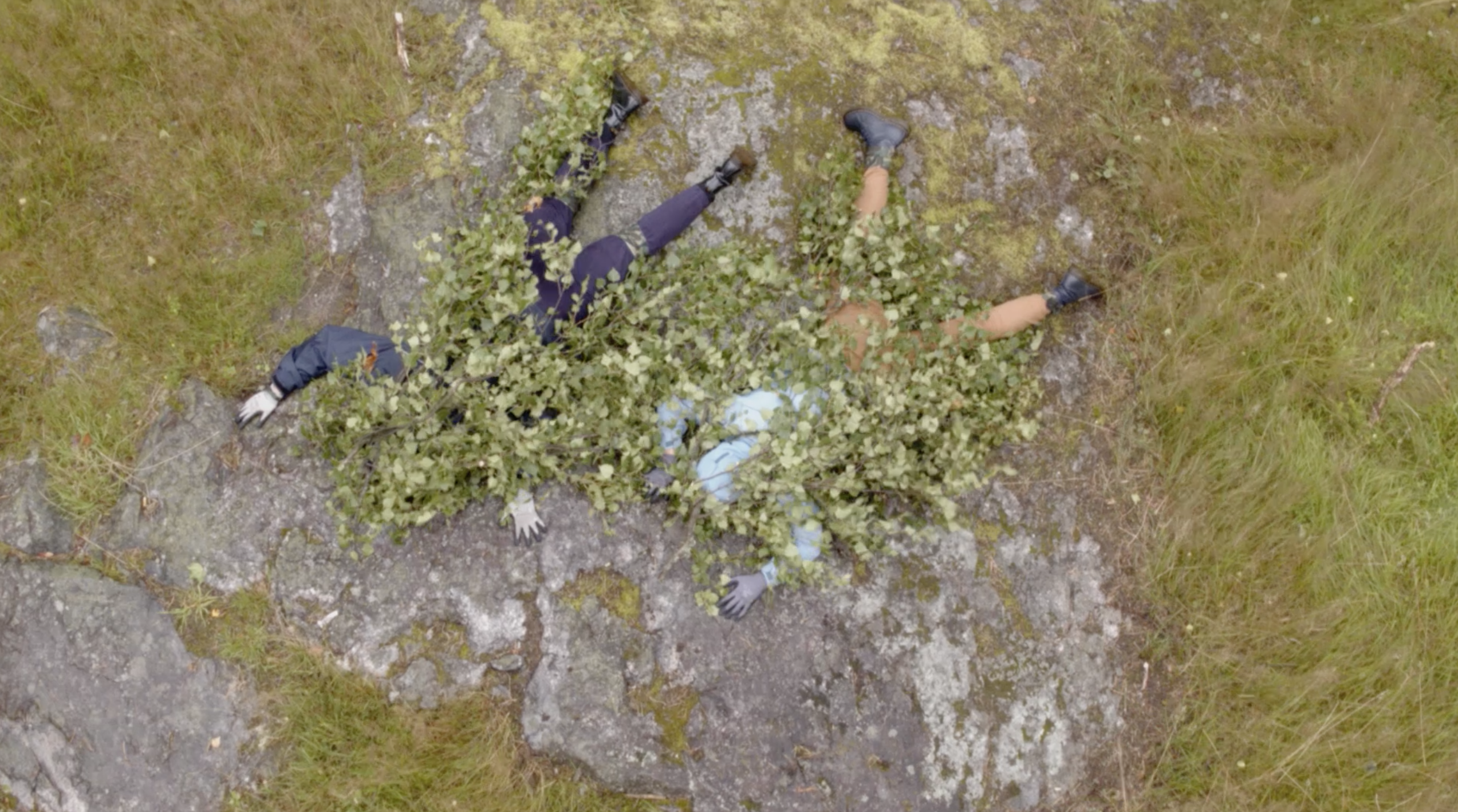
I’ve heard that it was prisoners who built these trenches, for if the war comes to Helsinki. But what prisoners? Where did they come from? Where they Russian or Chinese or Swedish ? Where i lived in Katajanokka there was a prison. Now it’s a hotel, isn’t it?
Collabortiave art project produced by artist Anastsia Artemeva and collaborative media art residency m-cult, about common (his)tory between clients of Kriminaalihuollon tukisäätiö (Krits) and local folks of suburban neighbourhood of Maunula, Helsinki. Krits is an NGO that support people in prison and their families, and through the project Maalinnoitushanke employes men who are currently on probation or are nearing the end of their prison sentence to restore the WWI trenchers around Helsinki.
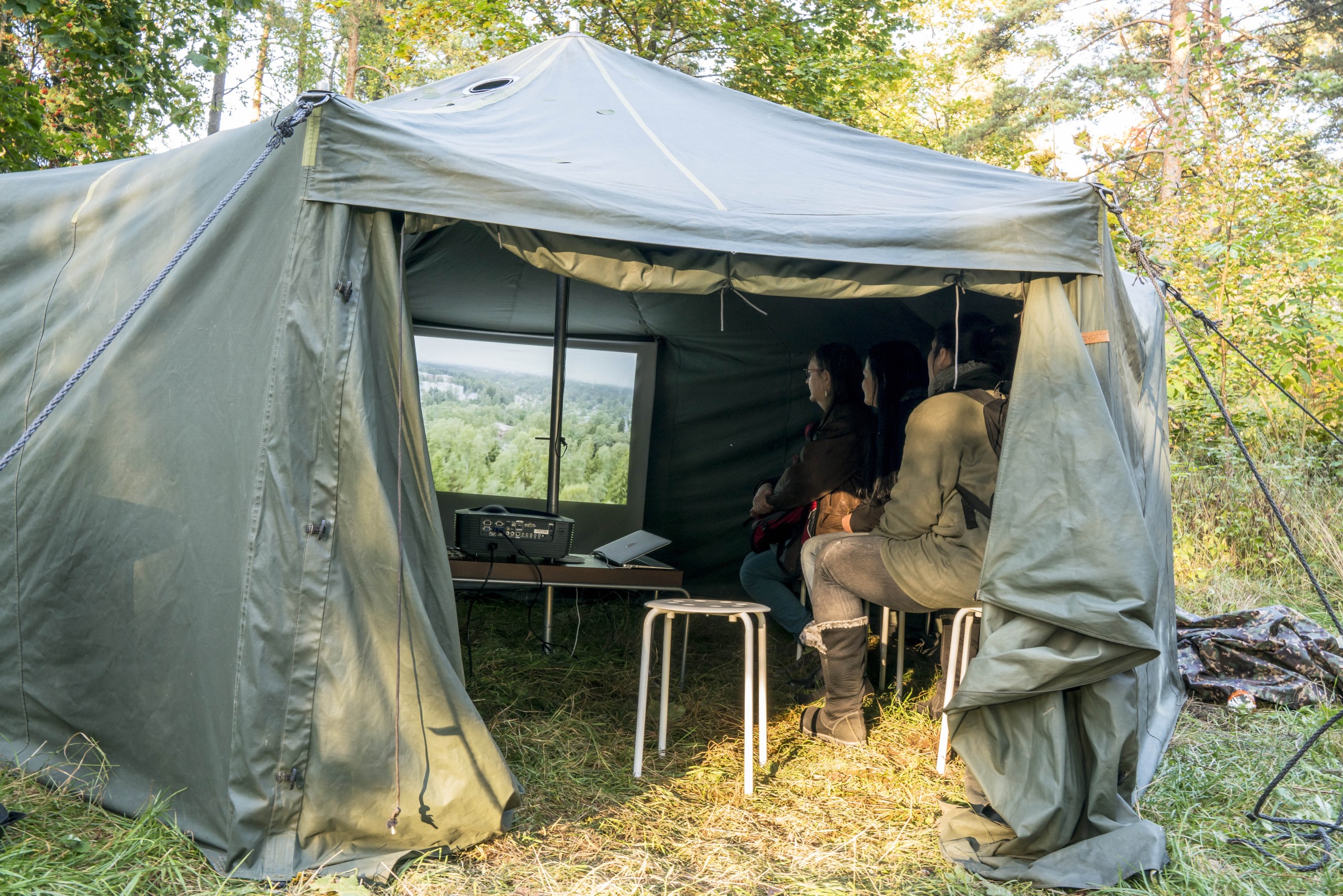
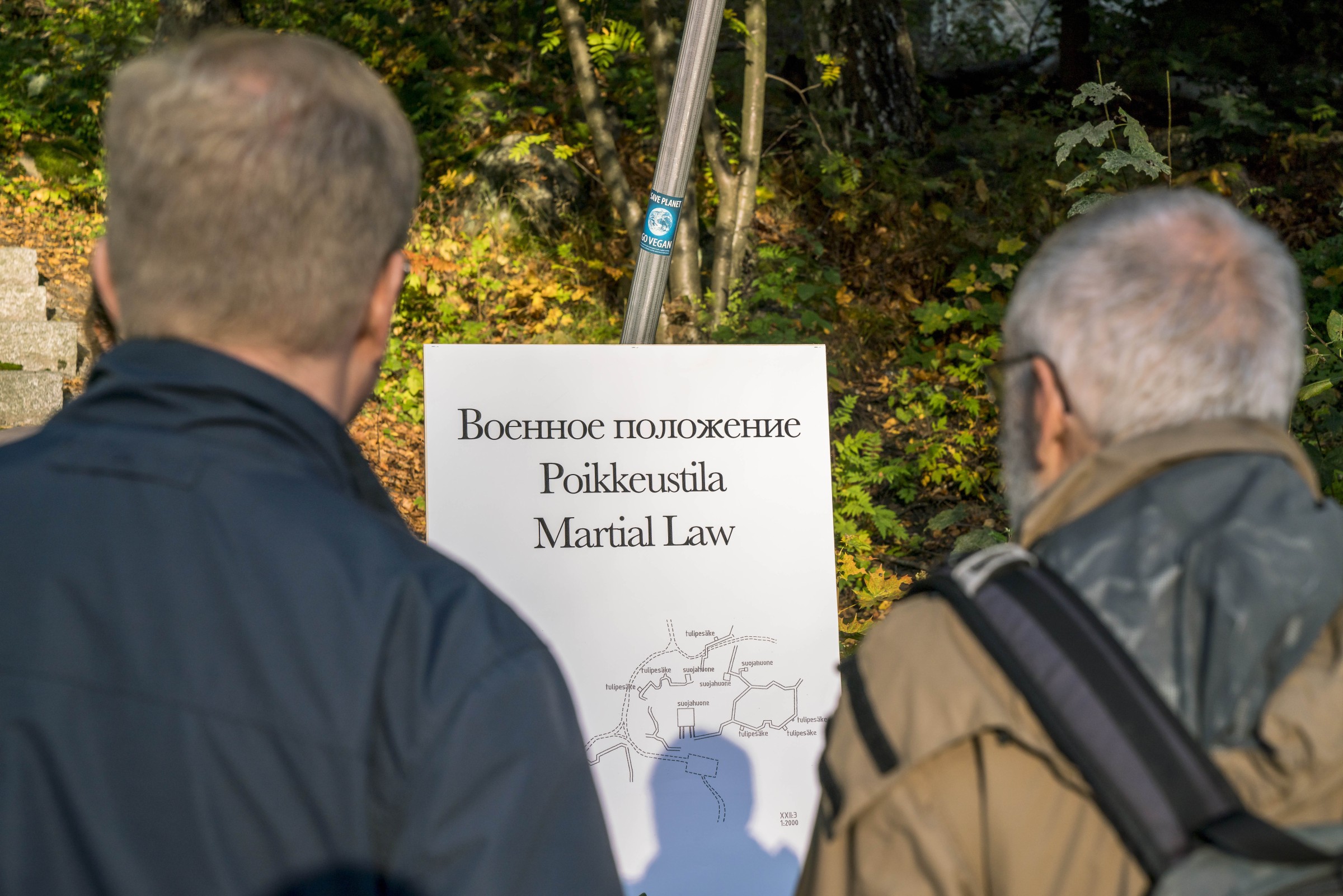
After the Russians left, and the Finnish state announced independence, the government and the people began to take the trenches down and use the valuable materials to build homes. The blew metal roofs off their paces, leaving the bunkers exposed. The Reds attempted to re-appropriate the trenches as hiding places, but the lack of professional soldiers in their groups meant they could not hold for very long.


Photography Vesa-Pekka Grönfors
Under an old house there is a storage room for cannon ammunition, which is still completely intact. There are two rooms, a window between the rooms, rails and concrete walls - all are still in place. The owners use it as a root cellar. They keep preserves there. Raspberry jam mostly.
Screenplay, design: Anastasia Artemeva
Sound design: Johannes Vartola
Voice: Anna Rawlings
Collaborators:
KRITS Maalinnoitushanke
Helander-koti
Suursuon päiväkoti
Maunula-talo
Markku Heikkinen, Helsinki city museum
Production:
Anastasia Artemeva & m-cult / Kaisa Kukkonen, Minna Tarkka

Anastasia Artemeva:
“I found the trenches project (Maalinnoitushanke) to be an excellent idea, as it both takes care of urban environment, and focuses on mental welfare of convicts, and I am very excited to be a guest in it. I see my role to suggest and facilitate a broader engagement with the place. I am also excited to introduce the Trenches project via Martial Law to the people who cannot physically go there to see it, or mentally feel separated from the prison folks due to the stigma attached to incarceration.
I have a particular interest in Patterimäki because it has no obvious famous history. It was built (as the story goes) by Chinese POWs shipped from Siberia to protect the Russian Empire from German invaders. Yet no battles were held, and there is no heroics acknowledged. It is in a way a blank canvas, a space we can project our own ideas of protection, containment, identity.

Based on the wishes and interests of the participants, as well as certain restrictions naturally coming while working with institutions, this collaborative project will employ different media. Personal stories, historical facts and scripted narrative merged through storytelling.
The collaboration turned out to be not only about the actual physical exchange of art works but also exchnage of our life conditions. It has become a lot about restriction, protection and fear. For example, the concept of anonymity that was borrowed from the Krits group and then presented to residents of the old folks’ home, and a dicussion followed as we made masks to hide our own identity. These masks were later worn by children who came to visit the site.”
Please read the full interview in Finnish and learn more about the project here.

Macro Golf
2018
Collaboration with Steve Maher
Meta-description

Deep in the valley of Helsinki, hewn into the very rock itself, lies the ruins of an ancient and mysterious archaeological site. Its true purpose is unknown, however many believe when it was built it signified something of great importance for the valley's inhabitants. The site and its layout bare potentially some sort of geometric or astrological parallel in which a ritual practice was likely performed. It is hypothesised that practitioners and pilgrims alike would traverse a set of challenges laid out within the space in order to prove their worth. The remains of roughly nine monuments can be found on the site, artifacts unearthed in the area have lead theorist to believe that using a short cudgel like object those participating in the ritual would manoeuvre a small circular white object through many perils and pitfalls. The outcome of the ritual we can only speculate, however we can surmise that the pockmarked holes on each monument served as some sort of receptacle for the small yet significant object. This major historical site may lead us to rethink the origins of mankind.
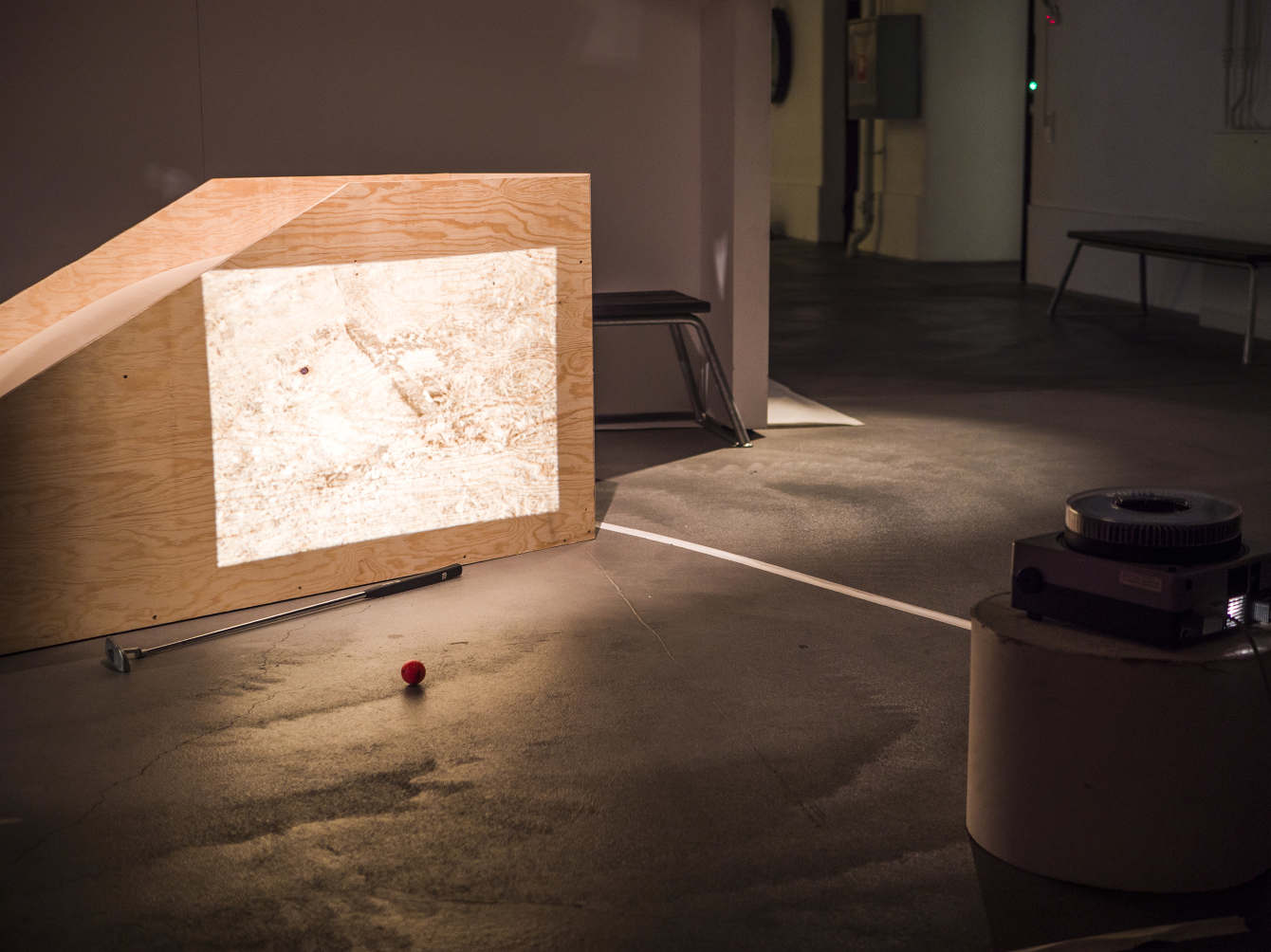
Description
The remains of a mini-golf course, possibly built in the 1950s, lie on the verge of the Helsinki city district of Laakso and its Central park. According to a source in the Helsinki Sanomat it was originally built by the Kristillinen Teekkariyhdistys for the people of the local area. Over the course of almost 70 years the site has fallen into disarray, with the last game of miniature golf likely to have been played there over a generation ago, slowly the forest is reclaiming this site making the delineations of its former purpose seemingly kabbalistic or esoteric.
Through a recreation of a hypothetical interactive miniature golf obstacle within the exhibition space functioning as a backdrop to a video work about the site the artist duo of Artemeva and Maher present a question about our associations with history, camouflage and triviality.
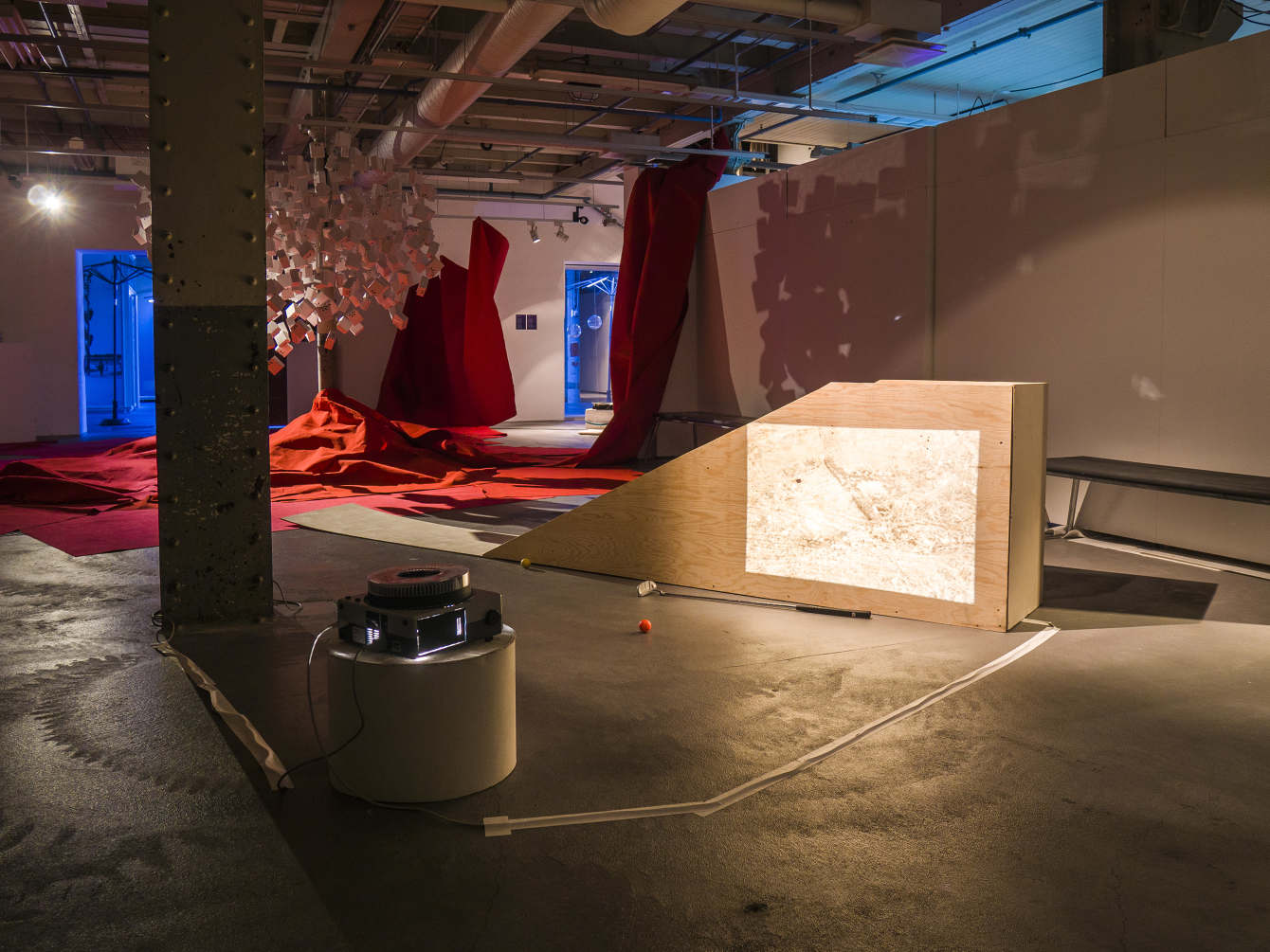
Leviathan
2017Leviathan is a dual show concept by Steve Maher and Anastasia Artemeva, in which the gallery of Oksasenkatu 11 is re-configured as the digestive system of an imagined leviathan, delving deep into the depths of the galleries core, basement level, the audience will be immersed within an artwork installation through the arrangement of lighting, sound, scent, video and objects.
Leviathan takes advantage of Oksasenkatu’s unique gallery layout as a space with basement access, Oksasenkatu 11 is a deceptive space, architecturally it is much larger than initial perceptions.
Throughout literature and mythology the leviathan re-occurs as allegory. In some tales it is a beast of sea, a giant fish or whale. In others it is an organisation, something which underpins the fabric of our world, engulfing it, consuming it, becoming a world itself. From the biblical parable of Jonah to the folk-tale of Pinocchio, the individual consumed into the depth of a beast who must escape or live for the rest of their days struggling against the digestive acids wishing to consume them re-occurs time and time again. Its origins are thought to have come from the oldest known tale, the epic of Gilgamesh.
The reality of being consumed by a giant whale or sea creature is far less fantastic. One is more than likely to succumb to drowning, asphyxiation and the grinding of teeth before one would ever manage to construct a crude shelter within made of shipwrecks and flotsam. There is one supposed case of a “real world Jonah” in the tale of James Bartley although nautical historians have since disproven what clearly began as drunken embellishment. The reality of the cetacean beings which inhabit these planets oceans are not the gigantic monstrosos which litter our mythologies, the reality is incredibly complex social animals who everyday come closer and closer to extinction.
Mikko Niemistö: Birthday
Visual design for a solo performance2017
”Starting from a melancholy party preparation, Birthday transforms into an increasingly intensive one-man revelry…Each object has a specific energy and they have a life of their own: the guitar plays itself, the coffeemaker grumbles rhythmically and the ball of ice tied to a fishing rod melts.” -Maria Säkö, Helsingin Sanomat 24.2.2017
Birthday is a dismantled solo that aims to break down subjectivity and expand agency from the performer to a collection of personal everyday objects and natural materials. The performance becomes a ritualistic creation of worlds and landscapes both within the human body and in the shared space of the performance event.
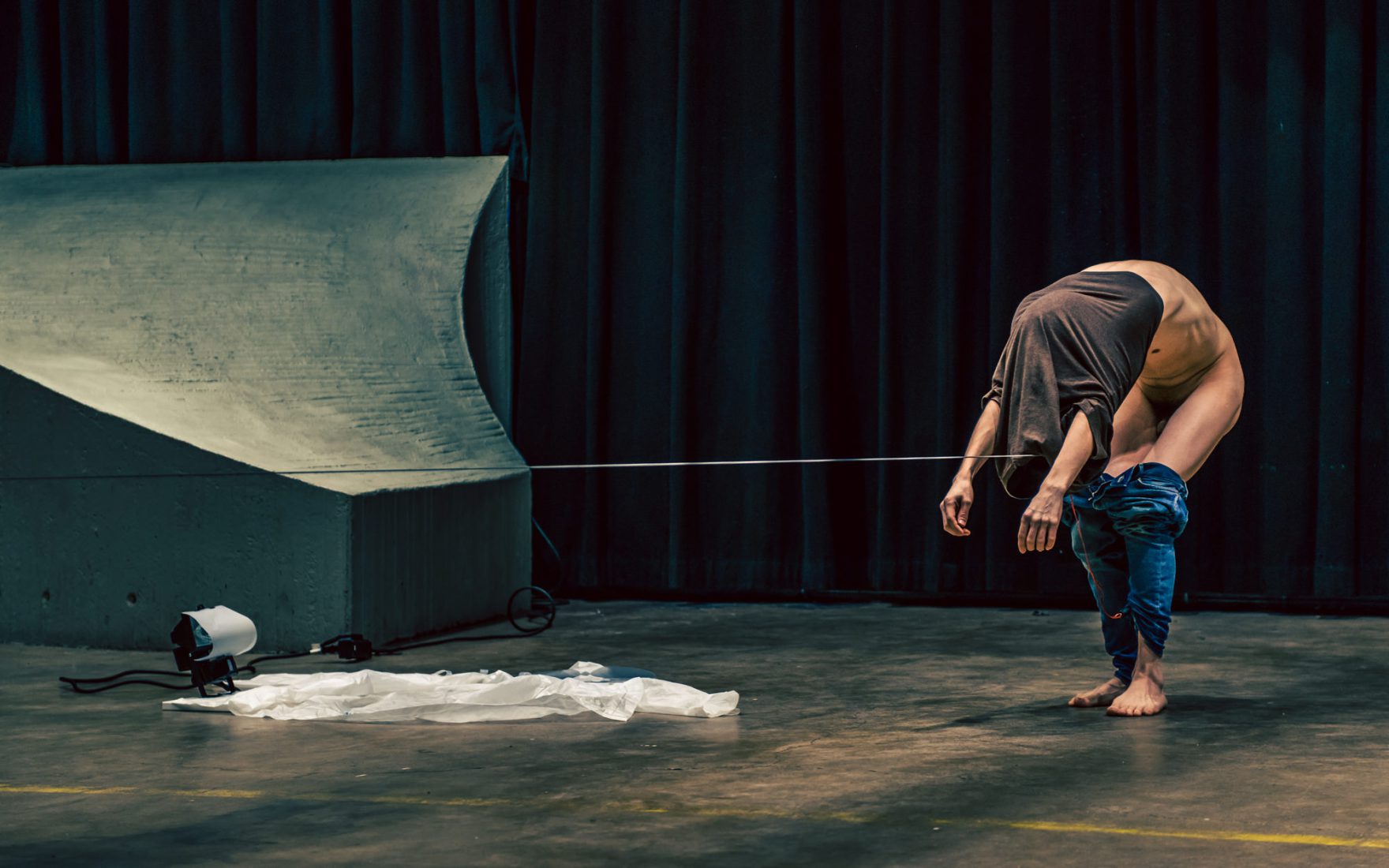
Photo: Saara Autere
Birthday is an assemblage of human and non-human materials, movements and memories that reside in the border between control and freedom. The choreography comes together through a composition of rhythms that the collection of mechanical and natural, organic and synthetic elements produce.
Working group:
Concept, choreography and performance: Mikko Niemistö
Visual design: Anastasia Artemeva
Sound design: Johannes Vartola
Mentor: Maija Hirvanen
Birthday premiered as part of Mad House Helsinki’s 4th season 22th February 2017 at 19.00.
Other performances: 23th and 24th February 2017 at 19.00
---

Photo: Saara Autere
Purettu soolo.
Se syntyy kun yksi kiinnittyy koiran remmiin, joka soittaa kitaraa ja kitara soittaa yhtä.
Se syntyy kun yksi hengittää lampun ”on” ja lamppu hengittää yhden ”off”.
Birthday on tila, jossa erilaiset käyttöesineet, luonnonmateriaalit ja kehomuistot asetetaan vuorovaikutteiseen suhteeseen. Esitys liikkuu tietoisen ja tiedostamattoman, orgaanisen ja synteettisen, rytmiikan ja melun rajamailla, Se on joukko asioita, joiden läpi vaikutteet, muistot ja energiat virtaavat. Se on epäsymmetrinen kokoonpano jonka sisällä yhteydet särisevät, purkautuvat ja ovat jatkuvassa liikkeessä.
Birthdayssa koreografian annetaan olla häilyvä, passiivinen, laiska ja kohiseva, mikäli se niin haluaa.
Mikko Niemistö on helsinkiläinen esitystaiteilija ja koreografi. Hän tutkii ihmiskehoa samaan aikaan syntyvänä ja kuolevana, epästabiilina, hajoavana sekä tilaan ja esineisiin levittäytyvänä. Toimijuuden alkuperä ja häilyvyys, ihmisen ja tilan muodostama ruumis muutoksineen sekä kehon ja erilaisten materiaalien välinen yhteys ovat hänen taiteellisessa työskentelyssään keskeisiä. Hän on kiinnostunut kohinasta, joka voi edustaa yhteyksien häilymistä, toimijoiden ja objektien rajoitusten paljastumista, kommunikaation vaikeutta sekä marginaaliin jätettyä.
Työryhmä:
Konsepti, koreografia ja esiintyjyys: Mikko Niemistö
Visuaalisuus: Anastasia Artemeva
Äänet: Mikko Niemistö ja Johannes Vartola
Mentori: Maija Hirvanen
More info:
https://mikkoniemisto.wordpress.com/portfolio/birthday
http://madhousehelsinki.fi/events/mikko-niemisto-birthday
Cover image: Saara Autere
Entitled
2012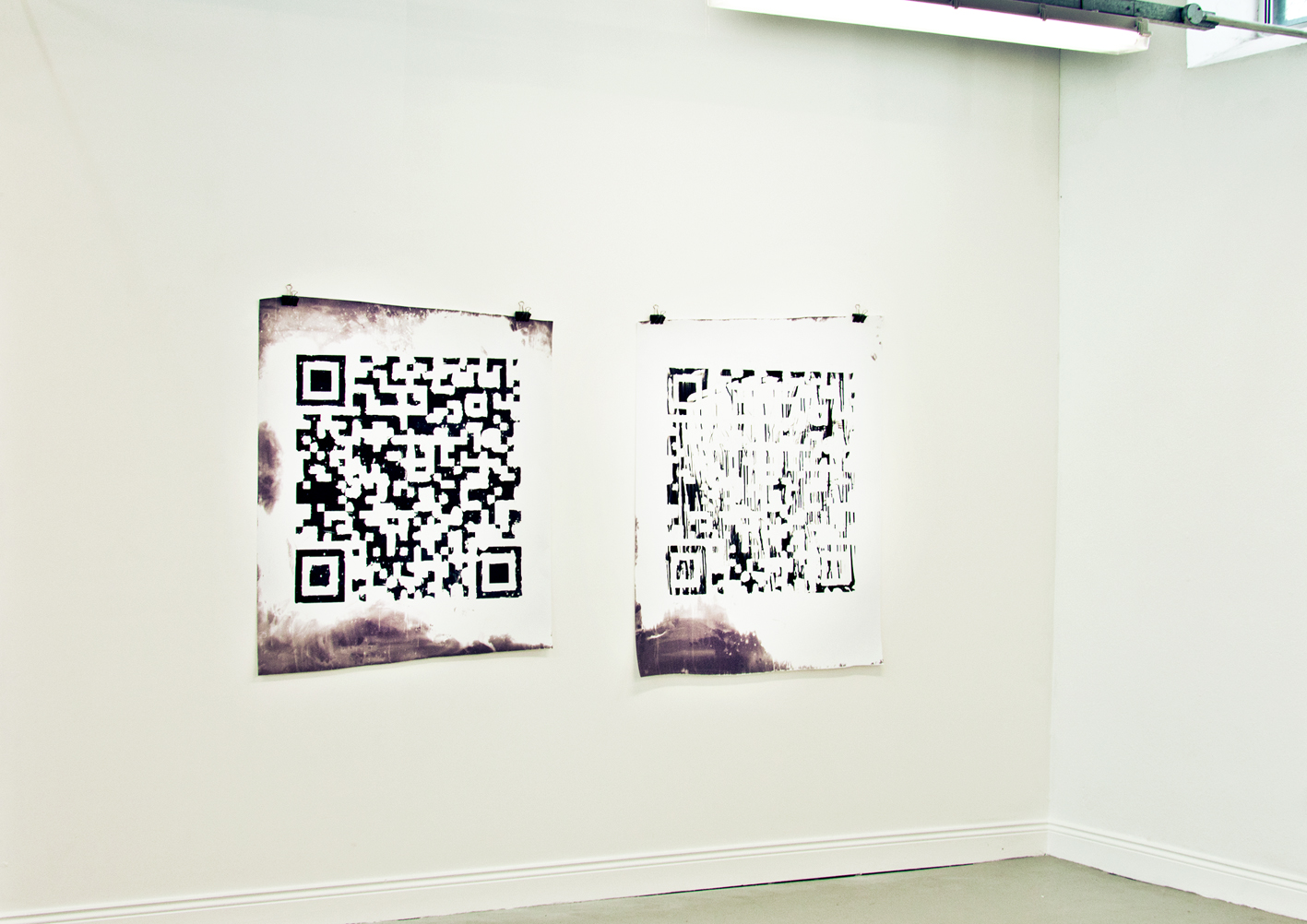
Diptych, Hand printed, Gelatin-Silver print, 130 x 107 cm each
Limerick School of Art and Design Graduate Show, June 2012
This is an interactive artwork where both prints are versions of one image, a computer-generated QR code readable with a digital device. Having been distorted though the manual developing process, one of the prints is scannable while the other one isn’t. Here traditional techniques of the analogue photography are opposed to the recent fascination with interactivity and the physical, cultural and personal restrictions faced in endless choices of today’s world. The piece also intends to challenge the definition of the end product of contemporary art and the multiple possibilities of meaning we are doomed to face when reading an artwork. The concept is influence by the ideas of Kazimir Malevich (1879 – 1935, Russia) who encouraged the abandonment of the representative art form, as well by Peter Weibel (b.1944, Ukraine) who investigates concepts of art, democracy and the global media.
Taking the research in civic-minded street art as well as the science fiction writings of George Orwell and Yevgeny Zamyatin as a starting point, the intention was to apply current communication technology and its vocabulary to the off line space. It is an attempt to insight contemplation of inter-human communication issues and to draw parallels as well as highlight the cause and effect of our preoccupation with the so-called social networking and the substitution of the real with personal electronic communicative devices.
In May 2012 another strand of the project was presented in a art festival called CatDig, curated that year by Lotte Bender in Limerick City.
During the two-day event, things like T- shirts, Hats, Fridge Magnets were given away and also stickers were distributed ,things that frequently made to carry an emblem of a certain team or corporation, things that have no real value but act as advertisement, things that we all like to take for free. Each object carried an image of a QR code, which can be scanned with a smart phone. When scanned, texts such as “This Doesn't Lead Anywhere”, and other phrases to highlight the disappointment of an online detachment would appear on the smart phone screen.
There were also stickers with QR codes placed on the buildings, lampposts and refuse bins on the street.
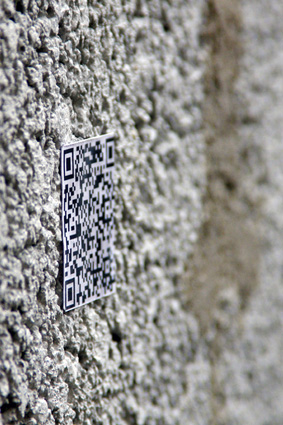 Each item was individually made and possessed a unique code on it, with a unique corresponding sentence. With the intention to distribute as many things as possible, the objects were placed on tables set up in various locations on the street throughout the two days and visibly stated that they were free to take.
Each item was individually made and possessed a unique code on it, with a unique corresponding sentence. With the intention to distribute as many things as possible, the objects were placed on tables set up in various locations on the street throughout the two days and visibly stated that they were free to take.Another strand of the project is a social intervention Vanity Case 2012.
During this project, around 30 handmade labels bearing QR codes were produced, decorated and pinned to clothes in second-hand charity shops in Limerick, which are quite popular amongst the locals, regardless of their income. The idea is that one buys some donated goods and the proceedings go to a specific charity.
When scanned, the codes read
Can you really not afford a brand-new one or does charity make you feel good?
The intention of this piece is to evaluate our relationship with charity shopping, when we get to buy affordable clothing and donate money for charity, kill two birds with one stone so to say. Myself, I’m quite fond of the bargains, even antiques affordable for me due to the ignorance of the volunteer shop assistant. But how good is it really? The artwork questions the mission, the clientele and the necessity of such an establishment.
Do we care what charity it is that we support? Is there any other way to support a charity and lead a sustainable lifestyle? Is it too much to ask? Is it enough? The sentence on the other end of the QR code is quite brutal, but only someone in a possession of quite an expensive mobile device one can read the barcode to see what it says. The juxtaposition of the advances of technology, including the damage the production of the gadgets causes the environment, and the need and the want for charity shops seems absurd.
